
by revityteam | Apr 17, 2024 | TMS Therapy
Anxiety attacks can feel like an overwhelming tide, sweeping in unexpectedly and leaving chaos in their wake. For those who experience these intense bouts of anxiety, finding effective ways to manage and mitigate their impact is crucial.
While traditional therapies offer relief to many, advancements in brain therapy techniques are opening new avenues for treatment that are both innovative and promising.
This blog delves into the world of brain therapy techniques specifically designed to manage anxiety attacks. From neurofeedback to Transcranial Magnetic Stimulation (TMS) and Mindfulness-Based Stress Reduction (MBSR), we’ll explore how these approaches target the neurological roots of anxiety.
Each technique offers a unique perspective on altering brain function to reduce the frequency and intensity of anxiety attacks, providing hope and potential solutions for those seeking relief.
Join us as we unpack the science behind these therapies, examine their effectiveness, and consider how they can be integrated into comprehensive care.
Whether you’re battling anxiety yourself or supporting someone who does, understanding these brain therapy techniques could be a pivotal step toward regaining control and improving your quality of life.
Understanding anxiety attacks
Anxiety is an innate part of being human. It is sometimes our companion, warning us of potential threats and propelling us to take necessary action to protect ourselves. It is, to an extent, necessary for our survival.
However, when anxiety becomes a constant, overwhelming force that hinders our ability to enjoy life, it transforms into anxiety attacks – those harrowing storms that seem to engulf us from within.
Before diving into brain therapy techniques for managing anxiety attacks, we want you to recognize the signs and symptoms of this mental turmoil.
During an anxiety attack, you might experience a rapid heartbeat, shortness of breath, chest tightness, dizziness, or an overwhelming sense of fear. These attacks often strike without warning, making it crucial to be prepared to face the storm head-on.
As you can see, it’s no laughing matter. Individuals who experience anxiety attacks never know when they will strike, making them even harder to cope with.
Now, let’s discuss the different types of brain therapy techniques that help with anxiety because there truly is hope through treatment.

Neurofeedback therapy
Neurofeedback therapy is a cutting-edge approach aimed at managing anxiety attacks. It’s a type of brain training that harnesses the power of your mind to help you better control your anxious thoughts and responses.
Rather than relying solely on medication or traditional talk therapy, neurofeedback therapy focuses on teaching your brain to function in a more balanced and calm state.
Now, you might be wondering, how does it work? Neurofeedback therapy involves placing sensors on your scalp, which detect and measure your brainwave activity.
These sensors are completely painless, so there is no need to worry about any discomfort during the process. The information these sensors collect is then fed into a computer system, which analyzes the data in real time.
During your therapy sessions, you’ll engage in various activities designed to stimulate specific brainwave patterns related to relaxation and overall calmness.
These could include playing interactive games, listening to soothing sounds, or even watching captivating visuals. As you participate, the computer provides immediate feedback to your brain through visual and auditory cues.
Here’s the best part. Your brain starts learning from this feedback. It unconsciously adapts and adjusts its activity to produce more of those desired brainwave patterns associated with tranquility. Over time, with repeated sessions, your brain becomes increasingly adept at self-regulation, helping you manage anxiety attacks with greater ease.
It’s essential to note that neurofeedback therapy is not a quick fix. Like any other therapy, it requires commitment and patience. You’ll likely need several sessions to witness noticeable change.
What makes neurofeedback therapy particularly appealing is its non-invasive nature. Unlike medications that may come with unwanted side effects, neurofeedback therapy simply helps your brain learn better self-regulation skills, allowing you to take control of your anxiety attacks without relying on external substances.
Of course, my friend, this therapy might not be for everyone. It’s crucial to consult with a healthcare professional who specializes in neurofeedback therapy to determine if it’s the right fit for you. They will consider factors such as the severity of your anxiety, any underlying conditions, and your personal goals before recommending this treatment option.
Cognitive behavioral therapy and the brain
Cognitive Behavioral Therapy (CBT) is a well-known, effective brain therapy technique for managing anxiety attacks.
CBT focuses on the connection between our thoughts, feelings, and behaviors. It helps individuals identify and challenge negative thought patterns and replace them with more positive, realistic ones. This therapy aims to change the way we perceive and react to certain situations, ultimately easing anxiety and restoring a sense of control in our lives.
Now, you might be wondering, how does CBT work in the brain? Well, this brain therapy technique has been found to have a powerful impact on the brain’s neural pathways.
When we experience anxiety, certain areas of the brain, such as the amygdala and the prefrontal cortex, become overactive. The amygdala is responsible for our emotional responses, while the prefrontal cortex handles reasoning and decision-making.
During CBT sessions, the brain undergoes a rewiring process, with the amygdala’s overactivity decreased and the prefrontal cortex strengthened. The therapy helps individuals develop new coping mechanisms and skills for managing anxiety, which ultimately affects the brain’s neural connections.
With practice, the previously overactive amygdala becomes less triggered, and the prefrontal cortex gains more control over our emotional responses.
Through the power of CBT, people learn to challenge their anxious thoughts and replace them with more balanced and rational ones. This change in thinking directly impacts their emotional state and helps reduce anxiety. By breaking free from negative thought patterns, individuals feel better. That’s the incredible impact of brain therapy!
One of the fantastic aspects of CBT is that it’s not limited to therapy sessions alone. Individuals are encouraged to actively apply the techniques they learn in their daily lives.
This means that with regular practice, brain changes become more permanent and lead to lasting improvements in managing anxiety. It’s like training a muscle — the more you exercise it, the stronger, healthier, and more resilient it becomes.
CBT can be used on its own or in combination with other brain therapy techniques for managing anxiety attacks. It is often used with relaxation techniques, such as deep breathing exercises or progressive muscle relaxation, to enhance its effectiveness.
Combining these techniques helps individuals learn to recognize physical symptoms of anxiety and develop strategies to relax their bodies and minds.

Transcranial magnetic stimulation
Transcranial magnetic stimulation (TMS) is a fascinating brain therapy technique that has gained popularity in recent years for managing anxiety attacks. It involves the use of magnetic fields to stimulate specific regions of the brain, offering a non-invasive, drug-free alternative for those seeking relief from their anxiety symptoms.
Picture this: a magnetic field being applied to your scalp, gently stimulating certain areas of your brain associated with anxiety regulation. That’s exactly what TMS offers. It’s a noninvasive procedure that uses magnetic fields to target specific regions of the brain, aiming to alleviate the symptoms and intensity of anxiety attacks. Pretty cool, right?
One of TMS’s key benefits is its ability to specifically target the prefrontal cortex, which, as we mentioned earlier, is responsible for mood regulation.
By stimulating this region, TMS promotes the release of neurotransmitters like serotonin and dopamine, which are known to play vital roles in maintaining a balanced mood and reducing anxiety. By enhancing the functioning of these chemicals, TMS helps alleviate the overwhelming feelings that often accompany anxiety attacks.
Another remarkable aspect of TMS is its noninvasive nature. Unlike other brain therapy techniques, such as deep brain stimulation, TMS does not require surgical procedures or device implantation. It’s as simple as sitting in a chair while a trained professional guides a specialized TMS device over your scalp.
Plus, there’s no need to worry about anesthesia or recovery time, making it a safe and convenient option for many individuals.
Mindfulness-based stress reduction and brain plasticity
Imagine sitting down with your best friend and discussing ways to combat anxiety attacks. Well, my friend, MBSR might be the therapy technique you’ve been searching for.
Our brains possess an incredible ability to adapt and change, known as brain plasticity. This phenomenon allows us to learn and develop new skills throughout our lives. MBSR harnesses the power of brain plasticity to rewire our brain’s response to anxiety.
When we experience anxiety, certain regions of the brain become hyperactive, triggering a fight-or-flight response. This heightened activity in the amygdala, known as the fear center of the brain, intensifies our anxiety. However, through regular practice of MBSR techniques like meditation and body awareness, we can begin to tame this overactive fear response.
By deliberately bringing our attention to the present moment, MBSR helps us develop a non-judgmental awareness of our thoughts, emotions, and bodily sensations.
This increased self-awareness enables us to recognize anxiety triggers and understand how they affect our body and mind. With time and practice, we gain better control over our anxious thoughts, and our brain starts to rewire itself.
Studies have shown that consistent MBSR practice leads to significant changes in brain structure and function.
For instance, magnetic resonance imaging (MRI) research has revealed increased gray matter density in the hippocampus and the prefrontal cortex of individuals who regularly practice mindfulness.
These areas of the brain are involved in emotion regulation and decision-making, suggesting that MBSR improves our ability to respond to anxiety more effectively.
Furthermore, MBSR has been found to decrease the size of the amygdala, diminishing its hyperactivity during anxiety-inducing situations. This reduction in amygdala size is linked with a decrease in anxiety symptom severity. It is truly remarkable how our brains can physically change as we engage in therapeutic practices like MBSR.
So, my dear friend, if you’re struggling with anxiety attacks, MBSR might just be the key to managing your symptoms. By incorporating mindfulness meditation, body awareness, and yoga into your routine, you can retrain your brain to respond more calmly and positively to stressors. Remember, brain plasticity allows us to change and grow, even in the face of anxiety.

Combining treatments
So, if you’re looking for a really solid way to tackle anxiety attacks, there’s this combination approach that involves TMS, CBT, and MBSR, and it could be a game changer.
Here’s how it works. TMS helps by adjusting the brain’s activity directly, targeting the specific areas that trigger anxiety. It’s like tuning a piano to make sure it plays the right notes.
Then, you’ve got CBT, which essentially teaches you how to catch, challenge, and change those unhelpful thoughts and behaviors that fuel anxiety. To top it off, MBSR comes into play with its focus on mindfulness and stress reduction, which is fantastic for helping you stay calm and centered.
Together, these methods cover all the bases — biological, psychological, and emotional, giving you a comprehensive toolkit for dealing with anxiety attacks. It’s like having the best team in your corner, each expert bringing something unique to the table. This combo could provide the deeper, more lasting relief you’ve been looking for.
Try TMS therapy at Brain Health Center
If you’re feeling overwhelmed by anxiety attacks and are looking for a scientifically-backed, innovative treatment option, consider exploring Transcranial Magnetic Stimulation (TMS) therapy at Brain Health Center.
TMS therapy offers a non-invasive approach to managing anxiety by directly targeting the brain areas involved in anxiety responses. At Brain Health Center, our dedicated team of professionals is ready to guide you through each step of the process, ensuring a comfortable and supportive treatment experience.
Don’t let anxiety control your life any longer. Consider TMS therapy as a proactive step toward recovery. Contact Brain Health Center today to schedule a consultation and learn more about how TMS can be tailored to meet your unique needs.
Together, we’ll find the right approach to manage your anxiety attacks and help you regain a sense of calm and control. Your journey towards a healthier, more balanced life starts here.

by revityteam | Apr 10, 2024 | TMS Therapy
I’ve been diving deep into something that I think could really make a difference for those battling OCD, and I had to share it with you. You know how tough OCD can be, right? It’s not merely about being a bit particular about things; it’s a serious struggle that can take over someone’s life.
Well, there’s this treatment called TMS, or Transcranial Magnetic Stimulation, that’s been making waves in mental health care, and it’s showing some promising results for OCD.
TMS is a non-invasive procedure where magnetic fields stimulate nerve cells in the brain. It’s been around for a while and has helped a lot of people with depression. Now, there’s growing evidence that it could help with OCD too.
So, in this chat, let’s explore TMS, its science, and why it might be a game-changer for those who feel stuck with traditional OCD treatments. I think you’ll find it fascinating!
What is OCD?
Today, I want to discuss Obsessive-Compulsive Disorder, or simply OCD. I know we’ve spoken about it in passing before, but I thought it would be cool to explore it in more detail because there’s something amazing I want to share with you — how Transcranial Magnetic Stimulation (TMS) can help people with OCD.
Now, imagine this – you’re walking down the street, and suddenly, an intrusive thought pops into your mind. Something like “What if I left the stove on?” The thought grips your brain and refuses to let go. It’s like a broken record, playing over and over again, causing unbearable anxiety.
In an attempt to alleviate the anxiety, you feel an intense urge to go back home and check the stove, even though you know you turned it off. This is a mere glimpse into the world of OCD.
So, what exactly is OCD? Well, it’s a mental health disorder characterized by unwanted, intrusive thoughts (often called obsessions) and repetitive behaviors (called compulsions).
These obsessions typically cause significant distress and interfere with daily life. While OCD manifests in various ways, some common obsessions and compulsions revolve around cleanliness, symmetry, and even doubt.
Individuals with OCD often engage in rituals or compulsions to temporarily ease the anxiety created by their obsessions. These rituals may involve excessive handwashing, counting, checking, or rearranging objects. It’s important to note that these behaviors are not pleasurable and are instead performed to gain relief from obsessions.
In short, OCD is a very unpleasant mental health condition to live with.
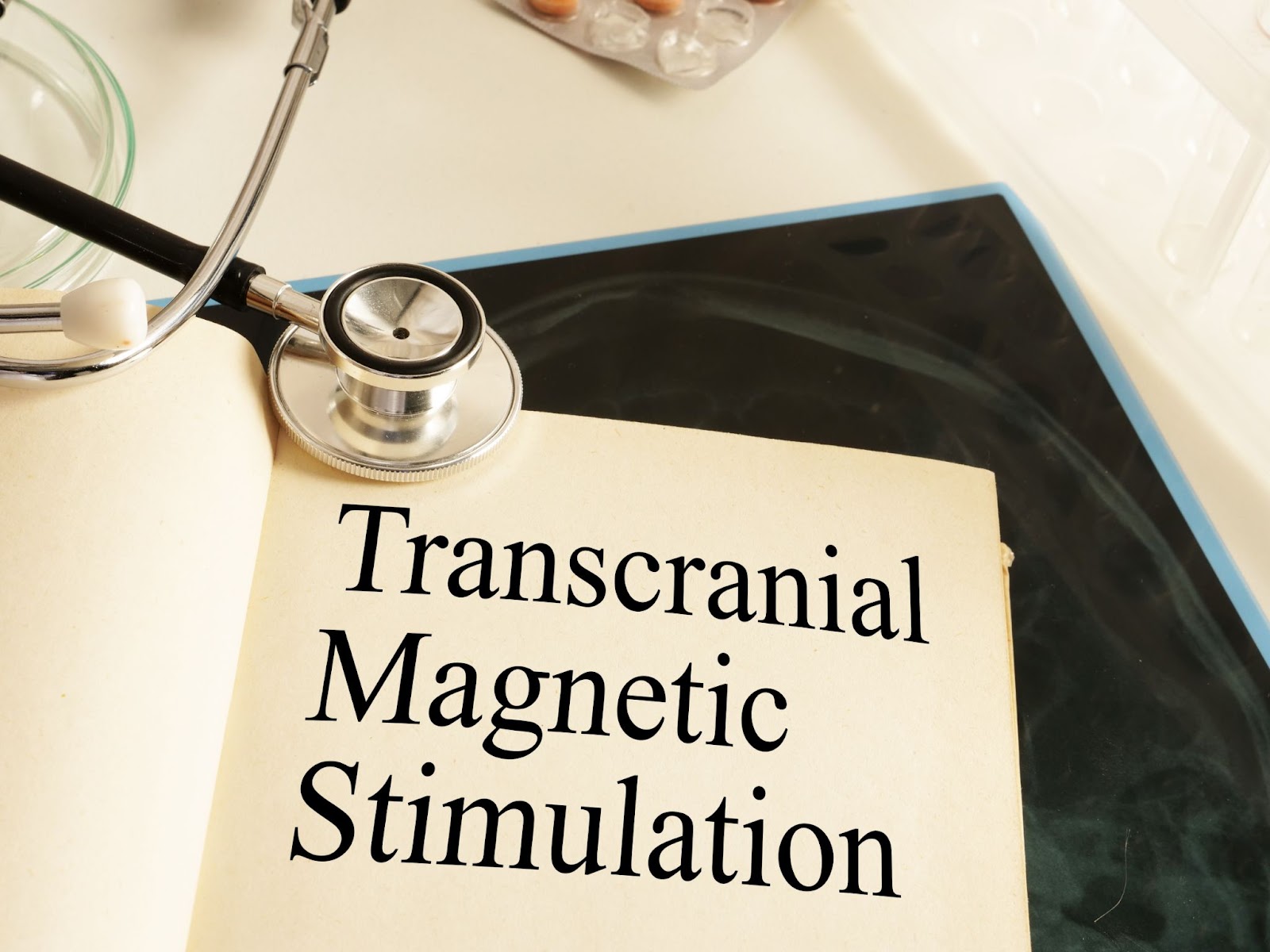
What is TMS therapy, and how can it help?
Okay, so what exactly is TMS therapy? Well, it’s a non-invasive procedure that uses magnetic fields to stimulate specific areas of the brain. In simpler terms, it’s like giving your brain a gentle massage with magnets. Trust me, it’s not as strange as it sounds!
Now, TMS therapy has been around for a while, primarily used to treat depression. However, recent studies have shown that it can also be quite effective in managing OCD symptoms. Isn’t that amazing? It’s like a double whammy of goodness!
TMS therapy targets specific regions of the brain involved in OCD, like the anterior cingulate cortex and the dorsolateral prefrontal cortex. By stimulating these areas with magnetic pulses, TMS helps modulate the brain circuits responsible for OCD symptoms. In other words, it helps restore balance to the brain’s functioning.
Now, you might be wondering if TMS therapy is safe. I totally get it! No one wants to mess around with their brain. Well, the good news is that TMS therapy is considered to be quite safe and well-tolerated.
In fact, it has been approved by the U.S. Food and Drug Administration (FDA) for the treatment of depression. Side effects are generally mild and temporary, such as scalp discomfort or headache during or after the sessions.
The treatment itself typically involves several sessions over a few weeks. During each session, a technician places a magnetic coil against your scalp, targeting the specific brain regions we talked about earlier. You don’t need any anesthesia, so no worries about feeling groggy afterward. And the best part? You can resume your daily activities immediately after the session.
Now, buddy, I can see the question forming in your mind. Does it actually work? Well, research suggests that TMS therapy can indeed have a positive impact on reducing OCD symptoms. It’s like a superhero ally that enhances the effectiveness of other treatments.
Of course, it’s important to remember that TMS therapy might not be a one-size-fits-all solution for everyone with OCD. It’s essential to consult with a qualified healthcare professional who can evaluate your specific situation and determine if TMS therapy is a suitable option for you.
Integrating TMS therapy into your OCD treatment plan
When it comes to tackling OCD, there’s no one-size-fits-all solution. That’s why a holistic approach, one that considers all facets of your health and lifestyle, is key. And this is where TMS therapy comes into the picture — not as a standalone cure but as a pivotal piece of a larger, more comprehensive treatment puzzle.
Imagine TMS as one of the tools in your toolbox. Just like a carpenter wouldn’t rely solely on a hammer to build a house, TMS therapy is most effective when used in conjunction with other treatments.

Cognitive-behavioral therapy (CBT), for example, is a cornerstone in managing OCD, helping to retrain your brain and change the patterns of thinking and behavior that feed the cycle of obsessions and compulsions.
Medications can also play a crucial role in balancing the brain’s chemistry to reduce symptoms. Lifestyle changes — like stress management techniques, regular exercise, and a balanced diet — can further bolster mental health.
But how do you weave TMS into this tapestry of treatments? It starts with a conversation with your healthcare provider. Together, you can craft a treatment plan that’s as unique as your fingerprints, one that combines TMS with other therapies to target your OCD from multiple angles.
This personalized plan isn’t static; it’s a living document that evolves as you do, adapting to your changing needs and circumstances to ensure the best possible outcomes.
The promise of TMS therapy, when integrated into a well-rounded treatment strategy, is not merely about managing symptoms; it’s about unlocking a level of well-being that might have felt out of reach. It’s about crafting a life where OCD doesn’t hold the reins, and you’re free to pursue your passions and enjoy your relationships to their fullest.
Considerations and candidacy for TMS therapy
Now, let’s get into some crucial points to consider when contemplating TMS therapy for OCD.
Diagnosis and treatment resistance
Before considering TMS therapy, it’s essential to ensure a proper diagnosis of OCD. TMS is typically considered when traditional treatment methods, such as medication and therapy, have not provided satisfactory results. Your doctor will evaluate your medical history and assess the severity and resistance of your OCD symptoms to determine if TMS therapy is a suitable option for you.
Safety measures
Like any medical procedure, TMS therapy has safety measures in place to ensure its effectiveness and minimize potential risks. Your doctor will evaluate your medical history and consider any pre-existing conditions or medications you may be taking.
Certain factors, such as the presence of metallic implants or devices in your head, such as cochlear implants or aneurysm clips, may impact your candidacy for TMS therapy. Additionally, TMS therapy is generally not recommended for individuals with a history of epilepsy or seizures or for anyone who is currently pregnant.
Time commitment
TMS therapy typically involves several sessions spread over a few weeks, depending on the individual and their response to treatment. The sessions are usually conducted on an outpatient basis, meaning you can go home right after each session.
However, it’s important to keep in mind that each session can last anywhere from 20 to 60 minutes, depending on the targeted brain region. So, it’s essential to factor in the time commitment when considering TMS therapy for OCD.
Potential side effects
As with any medical intervention, TMS therapy for OCD may have some potential side effects, although they are generally minimal and temporary. The most common side effect reported is mild scalp discomfort or headache during or after the session. However, these symptoms usually subside quickly.
Rest assured that your doctor will closely monitor you throughout the treatment to ensure your safety and comfort.
Insurance coverage
Lastly, it’s worth mentioning that insurance coverage for TMS therapy varies and may depend on a few factors, including your location and insurance provider. Coverage may also depend on your specific diagnosis and treatment history. It’s crucial to check with your insurance company about their policies regarding TMS therapy for OCD.
Your doctor and their team can also provide guidance and support in navigating the insurance landscape, ensuring you have all the information you need to make an informed decision.
Remember, my friend, that TMS therapy is only one piece of the puzzle when it comes to managing OCD. It’s often recommended as an adjunct treatment to traditional therapies, such as cognitive-behavioral therapy (CBT), which focuses on changing thought patterns and behaviors associated with OCD.
Your doctor will carefully consider your unique needs, medical history, and treatment goals before determining if TMS therapy is the right path for you.
Brain Health Center
Feeling inspired and curious about what TMS therapy could do for you or someone you care about, especially when it comes to navigating the challenges of OCD? You’re not alone, and there’s a place ready to support you on this journey: Brain Health Center.
We’re passionate about the potential of TMS to offer new hope and real results, and our team is dedicated to providing compassionate, expert care. At Brain Health Center, you’ll find treatment and a community ready to stand by you, armed with the latest technology and personalized approaches to TMS therapy.
If you’re ready to explore a path that might change everything, we’re here to guide you, every step of the way. Don’t let doubt hold you back. Reach out to Brain Health Center, and let’s start this conversation. Your journey toward wellness starts with that first step, and we can’t wait to walk alongside you.
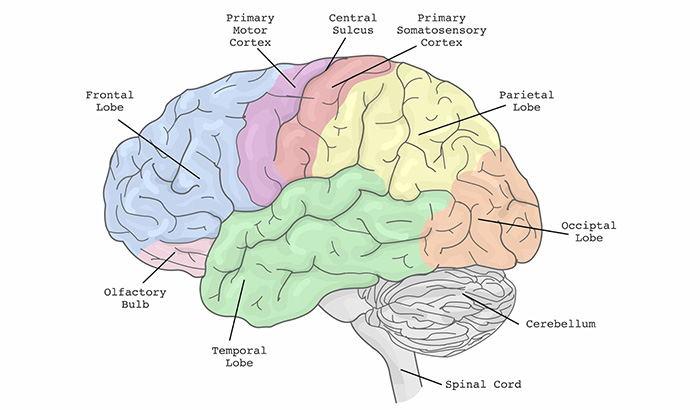
by revityteam | Apr 3, 2024 | TMS Therapy
Navigating the complex world of mental health often feels like trying to decipher a map without clear markers. From the shadowy valleys of depression to the tumultuous seas of bipolar disorder, each condition presents its unique challenges and landscapes.
Yet, understanding these conditions is the first step towards demystifying them, breaking down barriers, and fostering a supportive environment for those affected.
In this blog, we explore the intricate terrains of various mental health disorders and how brain mapping provides valuable insights to help treat them. Our goal is to inform and cultivate empathy, promote awareness, and encourage a dialogue that transcends stigma.
So, let’s set sail on this voyage of understanding, equipped with compassion as our compass, ready to explore the vast expanse of mental health together.
What is brain mapping?
Brain mapping is a fascinating field of research that uses cutting-edge technology to study the brain’s structure and function. It allows us to create detailed maps of the brain’s different regions and understand how they work together. Think of it as a GPS for the brain!
Now, the brain is a complex organ with billions of neurons (nerve cells) interconnected through an intricate network. It controls everything we do, from our thoughts and emotions to our movements and senses. But sometimes, this complex machinery goes awry and leads to mental health disorders.
That’s where brain mapping comes in. By studying the brain’s activity and structure, we gain valuable insights into the underlying mechanisms of these disorders. It helps us understand how specific regions of the brain contribute to different mental health conditions, like depression, anxiety, schizophrenia, and many more.
So, how does brain mapping work? Well, there are several techniques used in this field. In this blog, we’ll explain QEEG, or Quantitative Electroencephalography, the type of brain mapping we use. There’s also fMRI, PET, and EEG.
Think of QEEG as a super-detailed map of what’s going on in your brain’s electrical activity. You know how we have maps to navigate cities? QEEG is like having a GPS for your brain’s electrical patterns. It measures the electrical activity, or brainwaves, at multiple points on the scalp to give us a picture of how your brain is functioning.
Now, where it gets really interesting is how we use this in TMS therapy. With QEEG, we get a baseline of your brain’s activity before we start TMS. This is super helpful because it shows us the areas of your brain that might be overactive or underactive, particularly those related to whatever condition we’re treating, like depression or anxiety.
After we have this detailed brain map, we’re able to tailor the TMS therapy much more precisely. It’s like knowing exactly where to plant seeds in a garden for the best growth.
By employing these techniques and many others, brain mapping helps identify patterns and abnormalities in brain activity that are associated with mental health disorders. This information is invaluable because it allows us to pinpoint the specific brain regions involved in a particular disorder.
Let’s take schizophrenia as an example. Brain mapping studies have indicated that individuals with schizophrenia exhibit altered connectivity between the prefrontal cortex and other regions like the hippocampus and thalamus. These disruptions in connectivity can lead to the characteristic symptoms of the disorder, such as hallucinations, delusions, and impaired cognition.
Brain mapping helps us understand the brain’s structure and function and predict treatment outcomes. By analyzing brain images, we can identify biomarkers that indicate whether a patient is likely to respond well to a specific treatment or medication. This personalized approach to treatment can greatly enhance recovery and improve the patient’s quality of life.

Brain mapping in understanding mental health disorders
Mental health disorders encompass a wide range of conditions, such as depression, anxiety disorders, bipolar disorder, and schizophrenia, to name a few. These are often challenging to diagnose and understand, as they don’t manifest physical symptoms like other illnesses. However, with brain mapping techniques, we are beginning to uncover the intricate neurological mechanisms underlying these disorders.
For example, let’s say we’re studying depression. Through QEEG, we can observe reduced activity in the prefrontal cortex, a region associated with emotional regulation and decision-making. This finding tells us that individuals with depression may have trouble regulating their emotions, which helps us better understand the disorder and potentially develop targeted treatment strategies.
Now, understanding brain regions alone is not enough to fully comprehend mental health disorders. We must also investigate the intricate connections between these regions.
Let’s take schizophrenia as an example. Studies have shown abnormal connectivity in the corpus callosum, a structure that connects the brain’s two hemispheres. This disrupted connection may explain why individuals with schizophrenia show impaired communication between different parts of their brains. By uncovering these connectivity patterns, we can design interventions that target specific neural pathways, potentially leading to more effective treatments.
Now, the true power of brain mapping lies in its potential to personalize treatment plans for individuals with mental health disorders. No two brains are alike, and by understanding the unique brain signatures associated with each disorder, we can tailor interventions to meet individual needs.
This personalized approach holds immense promise for improving treatment outcomes and reducing the trial-and-error process often associated with mental health treatment.
Imagine a future where doctors can use brain maps to identify the most effective medication or therapy for a specific individual based on their brain’s characteristics. This leads to better outcomes and saves patients from experiencing unnecessary side effects or going through ineffective treatments.
While brain mapping is undeniably advancing our knowledge of mental health disorders, it is important to note that we’re still in the early stages of unraveling the complexities of the human brain. There is much more to learn, and ongoing research is crucial in harnessing the full potential of brain mapping for mental health.

What mental health disorders does brain mapping help with?
Depression
Depression is more than feeling sad; it’s a pervasive mood disorder that deeply affects how you feel, think, and handle daily activities. It’s characterized by a persistent sense of despair and disinterest in things once enjoyed.
People with depression might experience a range of symptoms, including changes in appetite or weight, sleep disturbances, fatigue, feelings of worthlessness or excessive guilt, difficulty thinking or concentrating, and recurrent thoughts of death or suicide.
It’s important to understand that depression is a complex condition with biological, psychological, and social components, making its treatment equally multifaceted.
Anxiety
Anxiety goes beyond the normal stress or worry that everyone experiences from time to time. It’s a broad term covering various disorders that cause fear, nervousness, apprehension, and worrying to the extent that they interfere with daily life.
Common symptoms include restlessness, increased heart rate, rapid breathing, difficulty concentrating, and sleep problems. A range of factors trigger anxiety, from genetics to environmental stressors, and its management often requires a combination of therapy, lifestyle changes, and sometimes medication.
OCD
OCD is characterized by a cycle of obsessions and compulsions. Obsessions are unwanted, intrusive thoughts, images, or urges that trigger intensely distressing feelings.
Compulsions are behaviors an individual engages in to overcome obsessions and decrease distress. These include excessive cleaning, checking, or repeating certain phrases or actions.
It’s a condition that can take up significant time and significantly interfere with daily functioning.
Bipolar disorder
Bipolar disorder is marked by extreme mood swings that include emotional highs (mania or hypomania) and lows (depression). During a manic phase, individuals may feel euphoric, full of energy, or unusually irritable, often making impulsive decisions with little regard for the consequences.
The depressive phases mirror major depression, with feelings of sadness, hopelessness, and a loss of interest in most activities. The cycling between these extremes can affect sleep, energy levels, behavior, and the ability to think clearly.

Schizophrenia
Schizophrenia is a complex, long-term medical disorder that affects how a person thinks, feels, and behaves. It’s often characterized by episodes of psychosis, marked by altered perceptions of reality.
This can include hallucinations (seeing or hearing things that aren’t there) and delusions (firmly held beliefs with no basis in reality). People with schizophrenia may also experience disorganized thinking, reduced social engagement, and a lack of motivation.
Autism
Autism, or autism spectrum disorder (ASD), refers to a broad range of conditions characterized by challenges with social skills, repetitive behaviors, speech, and nonverbal communication.
It’s known as a “spectrum” disorder because there’s a wide variation in the type and severity of symptoms people experience. ASD is often associated with unique strengths and differences, such as exceptional skills in visual and auditory areas. Still, it also may come with significant challenges in navigating everyday social interactions and communications.
Each condition is complex and multifaceted, impacting individuals in diverse ways. Understanding them requires empathy, patience, and a willingness to learn from the experiences of those affected. Brain mapping’s ability to help is promising for the future of mental health disorders.
The power of community
In mental health, the journey towards healing and understanding isn’t a solo expedition. It’s a path best walked with the support of a compassionate community.
Beyond the treatments and therapies lies the invaluable role of connection, understanding, and shared experiences. Whether in family, friends, support groups, or mental health professionals, a supportive community provides a safety net that catches us in our most vulnerable moments.
This communal support fosters an environment where individuals feel seen, heard, and validated. It breaks down the walls of isolation that often accompany mental health struggles and replaces them with bridges of empathy and solidarity. In such a nurturing environment, the journey toward healing becomes less daunting, and the steps toward progress are celebrated, no matter how small.
Moreover, being part of a community can significantly enhance the effectiveness of treatments like TMS therapy. Knowing that there’s a network of support before, during, and after treatment can bolster confidence, encourage persistence, and amplify therapy’s positive outcomes.
As we continue to navigate the complexities of mental health together, let’s remember the strength found in unity. If you’re on this journey, know that at Brain Health Center, you’re not merely a patient; you’re part of a community committed to walking this path with you, every step of the way.
Brain Health Center
As we journey together through the complexities of mental health, it’s clear that finding the right support and treatment is crucial. For many, traditional therapies provide relief, but there’s a frontier of hope for those seeking alternative paths: TMS therapy at Brain Health Center.
If you or someone you know is navigating the challenges of mental health disorders and looking for a new avenue toward well-being, TMS therapy could be the beacon you’ve been searching for.
At Brain Health Center, our dedicated team is committed to providing personalized care, utilizing cutting-edge TMS technology to light the way to recovery. Don’t let the journey stop here. Reach out to us, take that brave step forward, and discover how TMS therapy at Brain Health Center will help illuminate your path to mental health and well-being. Your story isn’t written yet, and together, we’ll start the next chapter.
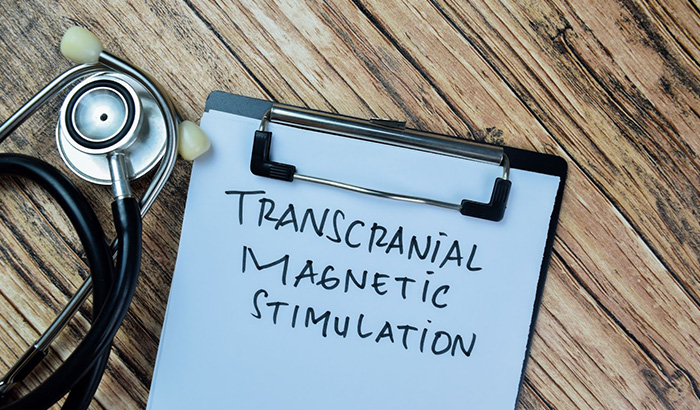
by revityteam | Mar 27, 2024 | TMS Therapy
When it comes to mental health, finding the right treatment feels like a journey in itself. For many, this journey leads to the question: Is TMS worth it? For some, the answer involves exploring Transcranial Magnetic Stimulation (TMS) therapy far from home.
TMS therapy, a revolutionary non-invasive treatment, offers hope to those who haven’t found relief through conventional methods. But why pack your bags and travel for TMS therapy? This blog will explore whether the benefits of TMS make it a worthwhile option for mental health treatment.
In this blog, we’ll dive into the compelling reasons why making the trip is a transformative decision for many. From accessing specialized care to experiencing the therapeutic benefits of a change in scenery, join us as we explore why venturing out for TMS therapy could be the key to unlocking a brighter, healthier future.
Reason 1: Access to specialized treatment
Not all medical centers offer TMS therapy, and finding the right place to get the treatment you need can be a real challenge. By opening up your options and being willing to travel, you increase your chances of finding a top-notch facility that specializes in TMS.
These specialized treatment centers have the latest equipment and highly-trained doctors and technicians who truly understand TMS therapy inside and out. They have an incredible amount of experience with this specific treatment, which means you’re in good hands. With their expertise, they can tailor the treatment to your unique needs, ensuring the best possible outcome.
By traveling to a specialized TMS center, you also benefit from the collective knowledge of doctors and researchers who are constantly staying up-to-date with the latest advancements in TMS therapy. They are at the forefront of research, so they know all the ins and outs of this revolutionary treatment. This level of expertise can make a world of difference in your journey towards better mental health.
Reason 2: Advanced technology and techniques
Reason number two to travel for TMS therapy is that you’ll have access to the most advanced technology available. This means you’ll receive top-notch treatment that’s backed by cutting-edge equipment. The machines used for TMS are specially designed to deliver precise magnetic pulses to the targeted areas of your brain.
But wait, there’s more! The techniques used during TMS therapy have been refined and perfected over time. Researchers and doctors have dedicated countless hours to finding the best ways to optimize the treatment. And let me tell you — they’ve nailed it!
These techniques ensure that the magnetic pulses reach the right spots in your brain with utmost precision. By doing so, they increase the effectiveness of the treatment and minimize any potential side effects.
Now, here’s the cherry on top. TMS therapy has been proven to be remarkably safe and well-tolerated. The equipment used is designed to prioritize your comfort and minimize discomfort during the procedure. So, you can relax knowing that you’re in good hands and the process will be as smooth as silk.
So, my friend, if you’re considering TMS therapy, traveling to experience the benefits of advanced technology and techniques is totally worth it. You’ll be receiving state-of-the-art treatment that’s safe, effective, and tailored for you.

Reason 3: Tailored treatment plans
Imagine if you had a superpower that allowed you to tailor your treatment specifically to your unique needs. Well, my friend, that’s exactly what TMS therapy offers! This cutting-edge treatment method takes into account your individual symptoms, brain activity, and overall goals.
With TMS therapy, you don’t have to worry about being another number in the system. Nope! Instead, you’ll be greeted by compassionate professionals who genuinely care about your well-being. They will work closely with you to create a personalized treatment plan that is designed specifically for you.
You see, TMS therapy doesn’t take a cookie-cutter approach. It studies your brain, analyzes your symptoms, and carefully crafts a treatment plan that addresses your specific needs. Whether you’re dealing with depression, anxiety, or another mental health condition, TMS therapy ensures that the treatment plan is tailored to tackle your unique challenges head-on.
Not only does this tailored approach increase the effectiveness of the treatment, but it also reduces the chances of any unnecessary side effects. Because why should you have to go through anything that doesn’t directly benefit you, right?
So, my friend, if you’re considering traveling for TMS therapy, remember that one of the amazing benefits is having your treatment plan tailored for you. This personalized approach means you’ll be receiving the best possible care to help you overcome your mental health challenges.
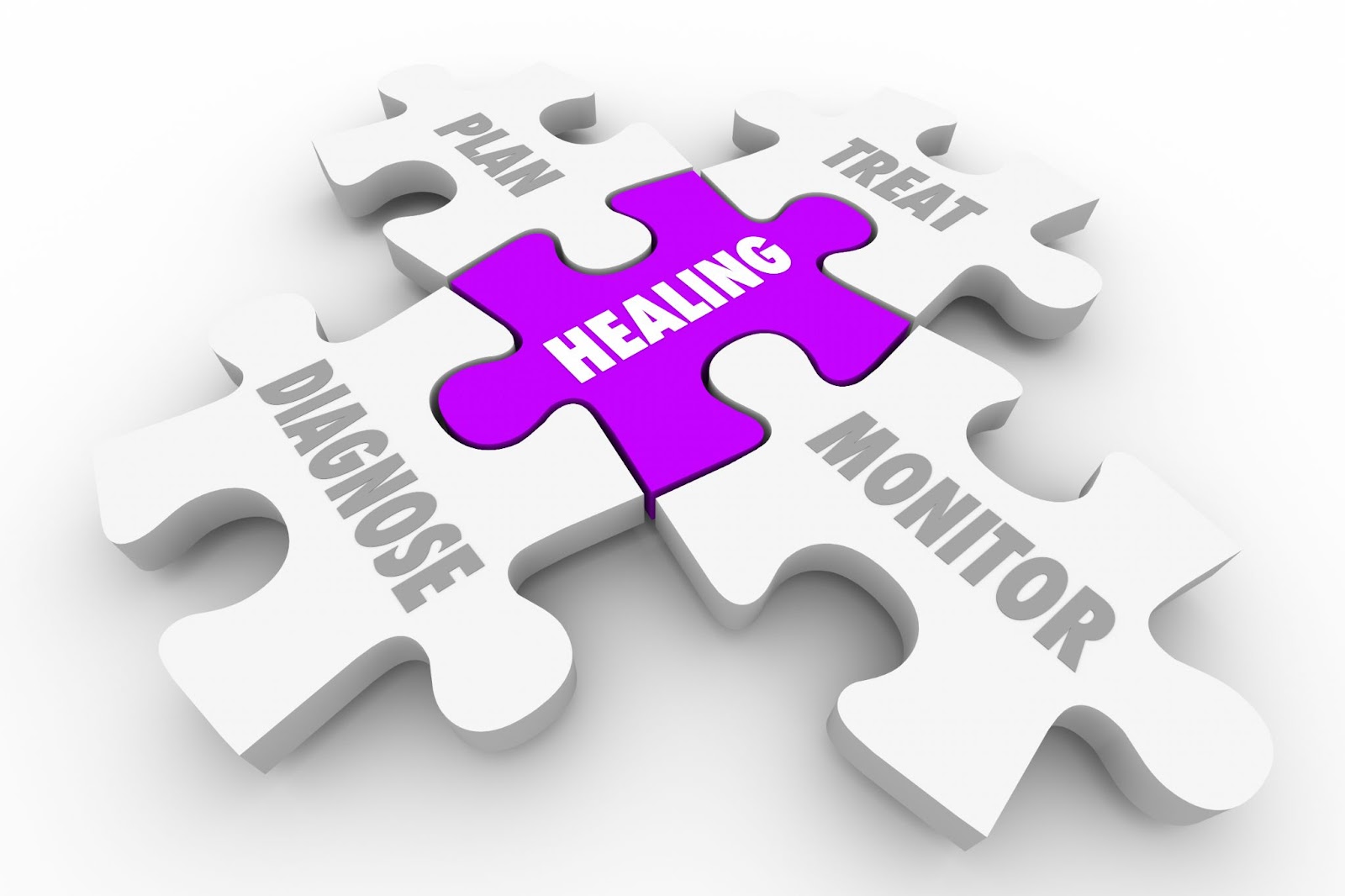
Reason 4: Comprehensive care and support services
When you decide to undergo transcranial magnetic stimulation, you’re not merely signing up for a single treatment session. Instead, you’ll be entering a care system that is built around you and your needs. Right from the start, a team of professionals will be by your side, guiding you through every step of the process.
First things first, before starting TMS therapy, you’ll have a consultation with a psychiatrist who specializes in TMS. This expert will take the time to really understand your unique situation, including your past treatment experiences, and any other medical conditions you may have.
Once you’re in the TMS program, you’ll have access to a range of support services that will make your experience as comfortable as possible. For example, you’ll have regular check-ins with your psychiatrist to discuss your progress, any concerns, or any changes that need to be made to your treatment plan. These check-ins are super important to make sure you’re getting the most out of your therapy.
Now, I know what you might be thinking – all these services sound amazing, but why should I travel for them? Well, my friend, these comprehensive care and support services are often not available in every location.
By traveling for TMS therapy, you’ll have access to some of the best professionals in the field, who are specifically trained to deliver this innovative treatment. You’ll be in good hands!
Reason 5: The therapeutic aspect of travel
One of the great benefits of transcranial magnetic stimulation is that it requires multiple sessions over a period of a few weeks. And here’s where the therapeutic aspect of travel comes into play. Think about it, my friend — imagine going on a short trip to a different city or even a different country for your treatment. Sounds pretty cool, right?
Sometimes, we need a break from our everyday routines and surroundings. Going to a new place for TMS therapy will provide a refreshing change of scenery. It gives you a chance to explore a different environment, try new foods, meet new people, and create new memories. These experiences will feel like a breath of fresh air and contribute to your overall sense of well-being.
Moreover, getting away from your daily grind helps you disconnect from stressors and responsibilities for a little while. When you’re away from your usual routine, you’re able to focus on your well-being, both mentally and physically. This break allows you to recharge, gain a new perspective on your life, and maybe even discover new interests or hobbies along the way!
Traveling also provides an opportunity for self-reflection. Being in a new place, away from familiar faces and situations, allows you to introspect and delve deeper into your emotions. This introspection helps you better understand yourself and your own mental health needs. Plus, if you’re accompanied by loved ones or travel buddies, they can offer support and be a source of comfort during your journey.
Now, you might be worrying about the logistics and costs of traveling for TMS therapy, but don’t fret! Many TMS treatment centers or clinics provide assistance in arranging accommodations and transportation for out-of-town patients.
They understand that traveling can be challenging and are there to help make the process as smooth as possible. Additionally, the benefits you’ll gain from the therapeutic aspect of travel far outweigh any inconvenience or costs.
TMS therapy at Brain Health Center
Feeling inspired to embark on your own journey toward healing and transformation? At Brain Health Center, we’re your partners in navigating the path to better mental health.
We understand the courage it takes to seek treatment, especially when it means traveling from home. That’s why we offer special accommodations for our distance patients, ensuring your journey to us is as smooth and stress-free as possible.
Don’t let distance be a barrier to accessing the life-changing benefits of TMS therapy. Our dedicated team is here to support you every step of the way, from personalized treatment plans to a welcoming, healing environment.
If you’re ready to explore how TMS therapy can make a difference in your life, Brain Health Center is here to help you. Take the first step towards a brighter future today — your journey to wellness begins with us.
Contact Brain Health Center today to get started!
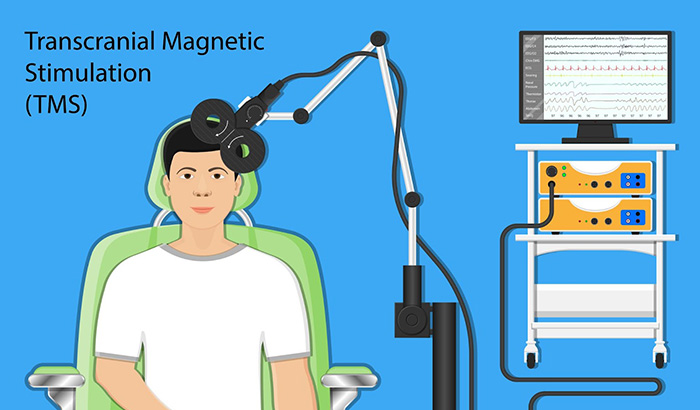
by revityteam | Mar 20, 2024 | TMS Therapy
Transcranial Magnetic Stimulation (TMS) therapy has emerged as a beacon of hope for many grappling with depression and other mental health challenges. But is TMS therapy legit? And is TMS real? As with any innovative treatment, TMS is often shrouded in myths and misconceptions that can cloud the truth of its efficacy and safety.
No matter how good something is, hearing misconceptions about it might deter you from trying it. That is why we’ve written this blog — so you can know the truth once and for all about TMS therapy.
In this comprehensive exploration, we’re setting the record straight by separating fact from fiction. Our journey will demystify TMS therapy, debunking common myths from its supposed discomfort to misconceptions about its experimental status.
Join us as we unveil the reality of TMS therapy, empowering you with the knowledge needed to make informed decisions about this life-changing treatment. Indeed, there are many TMS benefits you might not know about.
Let’s get started with our first myth: that TMS therapy is painful.
Myth 1: TMS therapy is painful
Many people believe that TMS therapy is a painful procedure, but the truth is far from it. While many medical interventions are painful, TMS isn’t one of them.
To start, let’s understand what TMS therapy is — a non-invasive treatment that uses magnetic fields to stimulate specific areas of the brain. The primary purpose of TMS therapy is to alleviate symptoms related to mental health conditions like depression and anxiety.
Unlike traditional treatments like medications, TMS therapy targets the root cause of the problem directly, offering a unique and effective approach.
Now, let’s address the pain aspect. Contrary to popular belief, TMS therapy is a painless procedure. You might be wondering, how can anything involving magnets not be painful?
But don’t worry, my friend. The magnetic pulses used in this therapy only reach a shallow depth within the brain, specifically targeting the areas responsible for mood regulation. These pulses are gentle and do not cause any discomfort during the session.
During a TMS therapy session, you’ll be sitting comfortably in a chair, fully awake and aware. A specialized device will be placed on your head, resting gently against your scalp. This device generates the magnetic pulses that stimulate your brain.
As the treatment progresses, you might feel a tapping or a mild sensation on your scalp, but it’s important to note that this is not painful. In fact, some people even find it relaxing!
Furthermore, TMS therapy sessions are relatively short. You can easily fit them into your daily routine without any significant disruptions. Additionally, this treatment is typically administered five times per week over a duration of four to six weeks. Although it might seem like a lot of sessions, each one is quick and pain-free.
Now, my friend, it’s crucial to understand that every person’s experience with TMS therapy can be different. While most individuals report no pain during the treatment, some might experience mild side effects such as a headache or slight scalp discomfort. These sensations, if present, are typically temporary and go away on their own shortly after the session ends.
In short, TMS therapy is not painful. The treatment is gentle, non-invasive, and does not involve any discomfort beyond mild sensations occasionally felt on the scalp. It stands out from traditional approaches to mental health conditions and offers hope to those who have not found relief from medications alone.

Myth 2: TMS has severe side effects
TMS does not have severe side effects. It’s a fact that TMS is a safe and well-tolerated treatment option with minimal side effects.
When it comes to TMS, one of the most important things to understand is that it is a non-invasive procedure. This means that the risk of experiencing severe side effects is extremely low.
Naturally, every medical treatment carries some potential risks, but in the case of TMS, they are generally minimal and transient. As we’ve discussed, the most commonly reported side effect of TMS is mild scalp discomfort or a slight headache during or after the therapy session. However, these sensations are generally short-lived and tend to go away on their own within a short time.
Compared to other treatment options like medication, the side effects of TMS are significantly milder. Many individuals who have previously struggled with depression or anxiety have found TMS therapy to be a welcome alternative because of its gentle approach and the lack of debilitating side effects often associated with medications.
It’s important to remember that TMS is a highly individualized therapy. Each person’s response to it may vary, so it’s essential to communicate openly with your TMS provider throughout the treatment process. By ensuring proper monitoring and adjustment, any potential side effects can be addressed and managed effectively.
Additionally, TMS has been clinically proven to have a very low risk of serious adverse effects. Numerous studies and research trials have been conducted, and none have reported any long-term harmful effects resulting from the use of TMS as a treatment for depression or other mental health conditions.
So, my friend, you can rest assured that TMS therapy is considered safe and well-tolerated. The occurrence of severe side effects is rare, and any discomfort experienced during the sessions is generally mild and temporary.
Finally, it’s worth mentioning that TMS therapy is FDA-approved for the treatment of major depressive disorder and certain other conditions. This approval demonstrates the extensive research and regulatory scrutiny that TMS therapy has undergone to ensure its safety and efficacy.
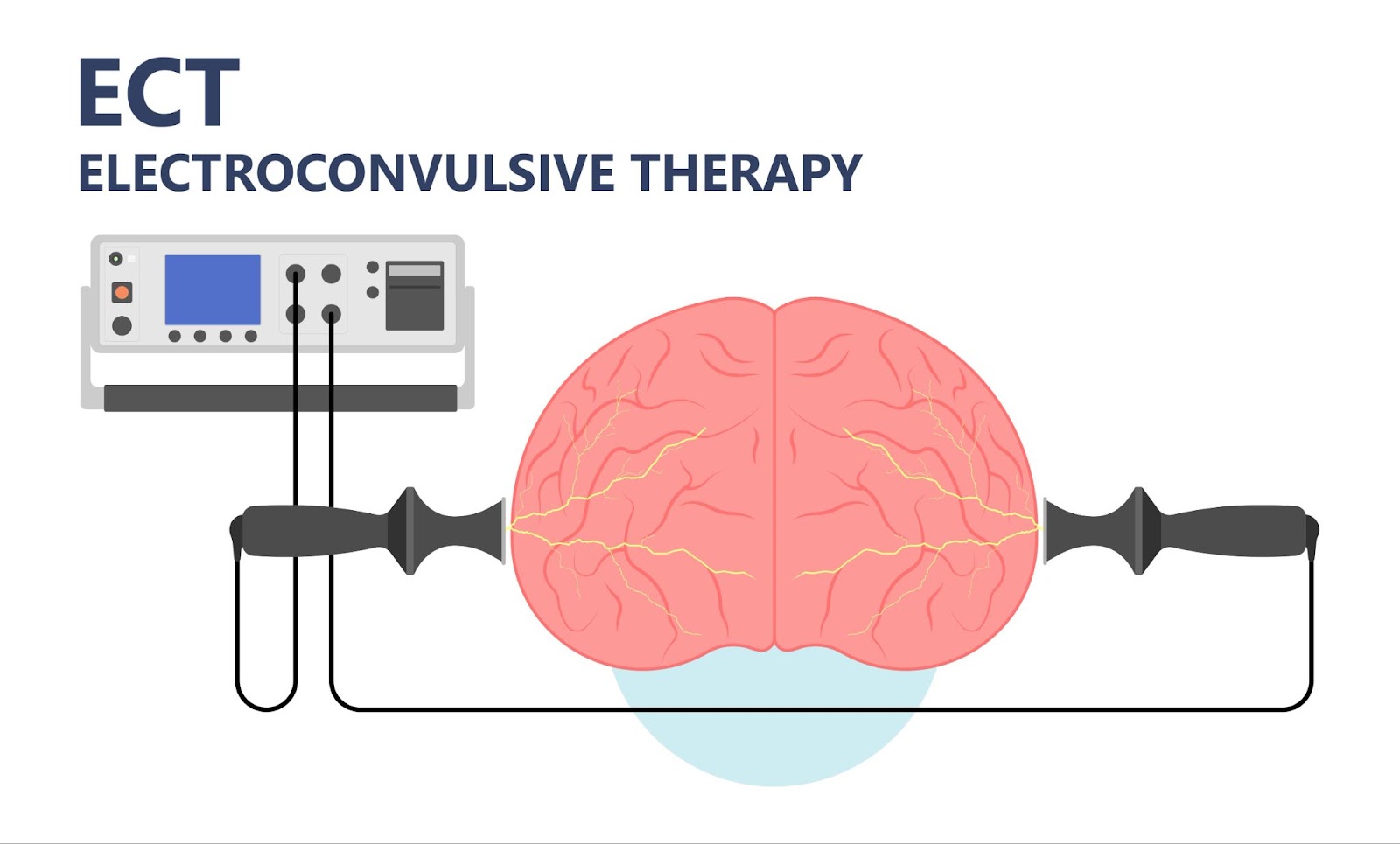
Myth 3: TMS is the same as ECT
Myth Busted: TMS and ECT are different treatment options altogether. While they both involve stimulating the brain to alleviate certain mental health conditions, the methods and effects are quite distinct.
Imagine TMS as a gentle tapping on the brain’s surface using magnetic pulses, just like when you tap rhythmically on a table. It doesn’t involve any sedation or anesthesia and is completely non-invasive, meaning no surgery or incisions.
TMS is a safe, painless, and effective treatment for mental health conditions such as depression, anxiety, and obsessive-compulsive disorder (OCD).
On the other hand, ECT is a treatment used for severe depression or certain psychiatric disorders when medications haven’t been effective. ECT is more invasive and involves brief electrical stimulation of the brain while the patient is under general anesthesia.
Contrary to TMS, ECT can cause temporary seizures, which are controlled and monitored by qualified medical professionals.
The difference becomes clear
While both TMS and ECT are forms of brain stimulation, the striking differences between them rest in the procedure and the associated side effects.
Treatment experience
TMS: During TMS therapy, you remain fully awake and aware. You can even listen to music or watch TV during the session, providing a comfortable and relaxed environment.
ECT: In contrast, ECT requires the patient to be asleep during the procedure. The medical team will give you anesthesia to make sure you don’t feel any pain or discomfort during the treatment.
Side effects
TMS: TMS therapy has minimal side effects, and any experienced are usually mild and temporary.
ECT: ECT, due to its more invasive nature, can have more significant side effects, such as confusion, memory loss, and muscle soreness. However, these effects are often temporary and resolve within a short period.
Always consult with a healthcare professional who specializes in TMS therapy or psychiatry to determine the best course of treatment for your specific needs. Understanding the facts and dispelling misconceptions can open doors to new and effective possibilities for mental health care.
Myth 4: TMS is experimental and not evidence-based
TMS is not experimental. TMS has been thoroughly researched, and the evidence supporting its effectiveness continues to grow.
Fact 1: Extensive clinical research supports TMS efficacy
My friend, researchers have extensively studied TMS therapy. Clinical trials and scientific studies have shown that it effectively treats various mental health conditions, especially major depressive disorder (MDD) and obsessive-compulsive disorder (OCD).
To give you a clearer picture, multiple rigorous studies, including randomized controlled trials, have consistently shown that TMS therapy can significantly reduce depressive symptoms in individuals who haven’t responded well to traditional treatments like medication or therapy alone.

Fact 2: FDA-approved treatment for depression and OCD
Would an experimental therapy receive approval from the United States Food and Drug Administration (FDA)? No way! TMS was granted FDA approval in 2008 specifically for the treatment of depression. Since then, it has also gained FDA approval for treating OCD.
This official stamp of approval reinforces TMS’s efficacy and indicates its safety when administered by trained professionals. It’s crucial to note that the FDA thoroughly evaluates the scientific evidence before approving any medical intervention.
Fact 3: Long-term benefits and minimal side effects
Another aspect of TMS therapy worth highlighting is its long-term benefits and minimal side effects. Multiple follow-up studies have indicated that the improvement in depressive symptoms achieved through TMS can be sustained for an extended period. This is excellent news for those who have been struggling with recurring depression.
Moreover, TMS carries limited side effects, which are generally mild and transient. The most common side effects reported during treatment sessions include scalp discomfort or mild headaches. TMS has a significantly favorable profile compared to the potential side effects associated with medications.
Fact 4: Growing adoption by healthcare professionals
TMS is not some far-fetched, experimental treatment confined to a few obscure clinics. It has gained immense credibility and acceptance among healthcare professionals worldwide. With numerous certified TMS centers across the globe, doctors and specialists are providing this evidence-based therapy to help people find relief.
Try TMS therapy at Brain Health Center
Ready to uncover the truth about TMS therapy and explore how it can transform your journey to mental wellness? Look no further than Brain Health Center, your trusted partner in demystifying and delivering this revolutionary treatment.
Our team of experts is committed to providing compassionate care backed by the latest research and technology in TMS therapy. Don’t let myths hold you back from exploring a potential path to healing that could completely transform your life.
Visit us at Brain Health Center, where we’re dedicated to addressing all your TMS therapy needs and guiding you every step of the way toward a brighter, healthier future. Take the first step today — your journey to wellness begins with us.
Call us at 435.900.0123, or fill out the form on our website to get started today and see how TMS therapy can benefit you.


















